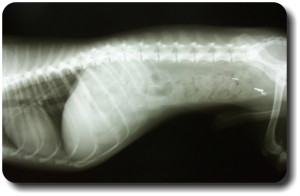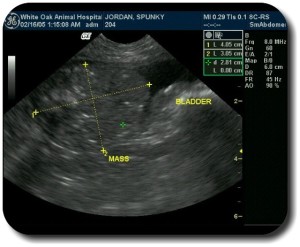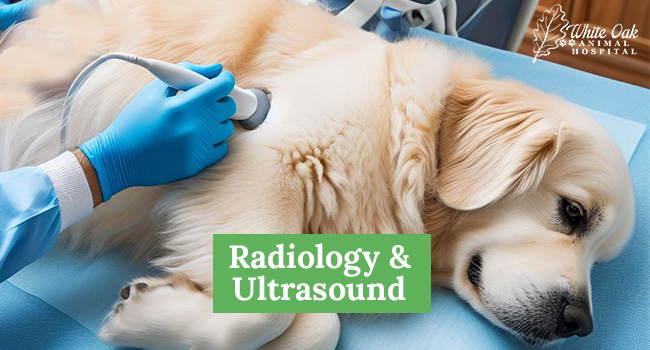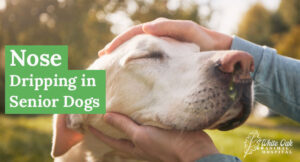Veterinary Radiology and Ultrasound Services
White Oak Animal Hospital offers advanced radiology and ultrasound services to diagnose and treat various pet health conditions. Our state-of-the-art equipment and experienced team ensure accurate imaging and timely diagnosis for your pet’s well-being.
Radiology

Radiography helps evaluate your pet’s musculoskeletal, cardiovascular, respiratory, gastrointestinal, reproductive, and urinary systems. At White Oak Animal Hospital, we offer the radiology services listed below.
Radiology diagnoses skeletal and soft tissue abnormalities, such as fractures, joint diseases, tumors, and foreign bodies. They provide detailed images of bones, organs, and tissues, helping veterinarians identify underlying health issues.
High-quality radiographs (X-rays) are vital in ensuring an accurate diagnosis. We take radiographs on-site, and results are available immediately.
Ultrasound

Ultrasound employs sound waves to generate real-time images of internal organs and structures, providing invaluable insights into your pet’s health. At White Oak Animal Hospital, our ultrasound services encompass a diverse array of diagnostic modalities, including:
- Abdominal Ultrasound: Abdominal ultrasound enables thorough evaluation of specific organs within the abdomen, such as the liver, kidneys, spleen, bladder, and gastrointestinal tract. It facilitates the detection of tumors, cysts, gallstones, and other abnormalities, aiding in timely diagnosis and treatment.
- Cardiac Ultrasound (Echocardiography): Cardiac ultrasound, also known as echocardiography, offers a comprehensive assessment of the heart’s structure and function. This advanced imaging technique is instrumental in diagnosing heart conditions such as murmurs, valve abnormalities, and congenital defects, guiding treatment decisions for optimal cardiac health.
- Reproductive Ultrasound: Reproductive ultrasound assesses the reproductive organs in breeding animals, including the uterus, ovaries, and testes. It assists in monitoring pregnancy, identifying reproductive abnormalities, and optimizing breeding programs for reproductive success.
- Renal Ultrasound: Renal ultrasound focuses on the kidneys, evaluating their size, shape, texture, and blood flow. It aids in diagnosing kidney stones, cysts, tumors, and other renal abnormalities and guides treatment for kidney-related conditions.
- Hepatic Ultrasound: Hepatic ultrasound assesses the liver, providing detailed images to detect liver tumors, cysts, abscesses, and other hepatic conditions. It is crucial in diagnosing liver diseases and guiding treatment strategies for optimal liver health.
- Splenic Ultrasound: Splenic ultrasound evaluates the spleen, detecting abnormalities such as tumors, cysts, and enlargement. It helps diagnose splenic conditions and guide treatment decisions for optimal spleen health.
- Pulmonary Ultrasound: Pulmonary ultrasound, also known as lung ultrasound, evaluates the lungs and surrounding structures. It can aid in diagnosing respiratory conditions such as pneumonia, pleural effusion, pulmonary masses, and other lung abnormalities and guide treatment decisions for respiratory health.
Our extensive ultrasound capabilities enable us to address various medical concerns and provide personalized care tailored to your pet’s needs. Trust White Oak Animal Hospital for comprehensive ultrasound services, prioritizing your pet’s well-being and ensuring accurate diagnosis and treatment.
Our radiology and ultrasound services are essential for ensuring accurate diagnosis, minimally invasive procedures, and advanced technology for your pet’s optimal health and well-being.
Comprehensive Evaluation

Real-Time Imaging
We can obtain real-time images of your pet’s organs and tissues with ultrasound. This dynamic imaging technique allows immediate visualization of abnormalities or changes, enabling prompt diagnosis and intervention. Real-time imaging is particularly beneficial in emergencies where quick decisions and actions are required to save a pet’s life.
Minimally Invasive Procedures
In addition to diagnostic imaging, ultrasound can also perform minimally invasive procedures, such as guided biopsies or fluid aspiration. These procedures are performed under ultrasound guidance, minimizing tissue trauma and reducing the need for invasive surgery. By offering minimally invasive options, we prioritize your pet’s comfort and recovery while ensuring accurate diagnosis and treatment.
Advanced Technology
At White Oak Animal Hospital, we invest in the latest radiology and ultrasound technology to provide your pet with the highest standard of care. Our state-of-the-art equipment ensures clear and precise imaging, allowing for accurate diagnosis and treatment planning. We can offer your pet the most advanced and effective veterinary care by staying abreast of technological advancements.
Collaborative Approach
Radiology and ultrasound are crucial in our collaborative approach to veterinary medicine. We work closely with other veterinary specialists, including radiologists and ultrasonographers, and bring them into the clinic if needed. This cooperative effort ensures that your pet receives the best possible care, with input from multiple experts in the field. By choosing our radiology and ultrasound services, you can trust that your pet’s health and well-being are our top priorities. We are dedicated to providing accurate diagnosis, minimally invasive procedures, and advanced technology to ensure the best possible outcomes for your furry companion.
Examples of Pet Health Problems Diagnosed and Treated:
- Skeletal Abnormalities (e.g., fractures, joint diseases)
- Soft Tissue Abnormalities (e.g., tumors, foreign bodies)
- Abdominal Disorders (e.g., organ abnormalities, fluid accumulation)
- Cardiac Conditions (e.g., heart murmurs, valve abnormalities)
Trust White Oak Animal Hospital for Advanced Radiology and Ultrasound Services
Our dedicated team is committed to providing compassionate and comprehensive care for your pet. Our advanced radiology and ultrasound services ensure accurate diagnosis and effective treatment for various health conditions.
Contact us today to schedule an appointment or learn more about our services.
People Also Ask:
What is the difference between radiology and ultrasound imaging for pets?
Radiology, or X-ray imaging, uses ionizing radiation to produce detailed images of internal structures, such as bones and organs, highlighting abnormalities like fractures or tumors. Ultrasound, on the other hand, uses sound waves to create real-time images of soft tissues and organs, offering dynamic visualization of structures like the heart, liver, and kidneys.
When would my pet need radiology or ultrasound services?
Radiology and ultrasound services are essential diagnostic tools used to evaluate a wide range of medical conditions in pets. Your veterinarian may recommend these imaging modalities to investigate concerns such as fractures, tumors, abdominal pain, respiratory issues, cardiac abnormalities, and more, helping to guide diagnosis and treatment decisions.
Are radiology and ultrasound imaging safe for pets?
Yes, both radiology and ultrasound imaging are considered safe for pets when performed by trained professionals. Radiology uses low levels of radiation exposure, which is generally well-tolerated by pets and carries minimal risk. Ultrasound, being non-invasive and radiation-free, poses no known health risks to pets, making it a safe imaging option for diagnosing various medical conditions.
How are radiology and ultrasound imaging procedures performed on pets?
Radiology involves positioning the pet appropriately and capturing X-ray images using specialized equipment. Ultrasound imaging entails applying a gel to the skin and using a handheld transducer to emit sound waves, which bounce off internal structures to create images displayed on a monitor. Both procedures are non-invasive and typically well-tolerated by pets.
What happens after my pet undergoes radiology or ultrasound imaging?
Following radiology or ultrasound imaging, the veterinarian will review the images to assess your pet’s condition and provide a diagnosis. Depending on the findings, further diagnostic tests or treatments may be recommended to address any identified issues. Your veterinarian will work closely with you to develop a comprehensive care plan tailored to your pet’s specific needs.
How long does it take to receive the results of radiology or ultrasound imaging for my pet?
Answer: The turnaround time for receiving results may vary depending on the complexity of the imaging study and the interpretation required. In many cases, preliminary findings can be discussed with you shortly after the imaging procedure, while comprehensive reports may take slightly longer to compile. We strive to provide timely updates and ensure you are informed every step of the way.
Can radiology or ultrasound imaging detect all types of medical conditions in pets?
While radiology and ultrasound imaging are powerful diagnostic tools, they may not detect every medical condition. Certain conditions, such as microscopic abnormalities or some soft tissue injuries, may not be readily apparent in imaging studies alone. However, these modalities are valuable for identifying various conditions and guiding further diagnostic evaluations as needed.
Are sedation or anesthesia required for radiology or ultrasound imaging in pets?
In most cases, sedation or anesthesia is not required for radiology or ultrasound imaging in pets. However, some pets may be anxious or uncooperative during the procedure, necessitating mild sedation to ensure their comfort and safety. We will carefully evaluate your pet’s needs and discuss any sedation or anesthesia requirements beforehand.
Are there any risks associated with radiology or ultrasound imaging for pets?
Radiology and ultrasound imaging are generally safe for pets and carry minimal risks when performed by trained professionals. Radiology involves low levels of radiation exposure, which is typically well-tolerated by pets and poses little risk. Ultrasound imaging, being non-invasive and radiation-free, is considered very safe and poses no known health risks to pets. We will prioritize your pet’s safety and well-being throughout the imaging process.





